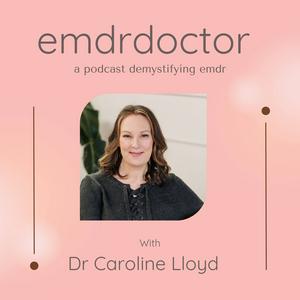40. How to help after an EMDR session
In this episode, I’m answering a question I’ve heard a lot lately: “How can I support someone after they’ve had an EMDR session?” And honestly, I love this question — because it comes from such a caring place.
We don’t often talk about what happens after EMDR. People go into sessions, things get stirred up, and then… what? If you’re the partner, the parent, the friend, or even just the person making the cup of tea afterward — you might be wondering how to help without doing too much, or getting it wrong.
So, I’m walking you through what that support can look like. From giving space to being present, from what not to say, to how to simply sit beside someone with kindness. EMDR can be intense, and the healing doesn’t stop when the session ends.
This episode is for anyone who's ever thought: "I want to help. I just don’t know how." You're not alone — and you're doing better than you think.
In This Episode, You'll Learn:
Healing doesn’t end when the EMDR session does — support afterward really matters.
You don’t need to fix anything; just being present is often the most powerful support.
It’s okay to not have the perfect words — calm, quiet presence goes a long way.
Respect the person’s pace — some people want to talk, others need space.
Supporting someone through trauma healing is brave, gentle work in itself.
Key Highlights:
Why EMDR can leave people feeling emotional, spaced out, or physically tired
How to support your loved one when they need quiet, sleep, or time to process
What to avoid saying after EMDR (even with the best of intentions)
Ways to check in gently — and how to let them lead the pace
The power of being a safe, calm presence in someone’s healing journey
Resources Mentioned:
Dr. Lloyd’s Heal Your Past online EMDR program – Register at emdrdoctor.com.au/heal
Research on PTSD treatments and why EMDR is faster and more effective than traditional talk therapy for trauma
Contact and Feedback:
Thinking about trying EMDR for PTSD? Reach out to Dr. Lloyd at emdrdoctor.com.au.
Note: This podcast provides general information and is not a substitute for individual medical advice. Always consult your healthcare provider for personalised recommendations.
Subscribe & Stay Connected:
Don’t miss next week’s episode — we’ll be exploring even more about how EMDR can shape our lives and relationships. You won’t want to miss the insights.
Follow The EMDR Doctor podcast to stay in the loop with expert chats, inspiring stories, and practical takeaways for your healing journey.
Join Dr. Caroline Lloyd as she demystifies PTSD and provides hope for recovery, showing that healing is possible with the right tools and support.


